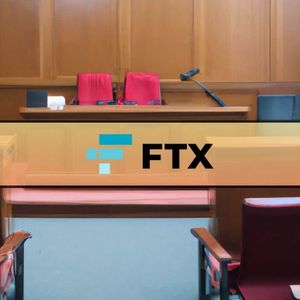Summary MST offers leveraged exposure to MSTR via derivatives, with a secondary income strategy using credit call spreads for weekly distributions. Some call it “yielding bitcoin,” but it’s actually an alternative that hides very different functions and purposes. In some ways, it tries to blend the output of MSTX and MSTY, though with a different methodology. Under current conditions, it’s impossible not to consider a potential risk of return decay and NAV decay, similar to leveraged exposures and option-based strategy funds. Have you ever seen a daily leveraged ETF that combines an income strategy like a credit call spread and distributes income weekly? Well, that’s essentially what the Defiance Leveraged Long + Income MSTR ETF ( MST ) does. Let’s be honest: it’s not something you see every day. And I was really intrigued to see how some analysts are already talking about MST as an ETF offering indirect, income-generating exposure to Bitcoin. Fast thinking: “wow.” Slow thinking: “wait... what?!” Curious, because if I let my imagination run wild, I immediately think of an MSTX with distributions like an MSTY . Then I come back to reality, and realize it’s quite different… but before that. What is MST really? A brand-new ETF from Defiance , launched on May 1, 2025, with just $88 million in AUM and 22 positions in its portfolio, which, as we’ll see, is essentially a piece of financial engineering architecture designed to “optimize” exposure to MSTR. Interestingly, Morningstar immediately categorized it under Trading – Miscellaneous , framing it as a tactical rather than strategic ETF, suited for a satellite rather than a core portfolio allocation, for short-term plays rather than long-term holdings (which, let me say, contrasts a bit with the mindset of an income investor). MST - Profile (Seeking Alpha) First thought: “Okay, but how much does it cost me?” A fair and implicit question. The answer: an expense ratio of 1.31%, and a hidden cost of 0.39% spread (hopefully temporary), as indicated by the 30-day median spread. But focusing on cost without understanding the value is a mistake, we know that well by now. So what value does MST offer in return for such a relatively high cost? The Holdings I prefer to start with the holding distribution , so I can get a sense of what MST is really made of, before being influenced by the marketing and fact sheets: A dominant position: 180% in Total Return Swaps on MSTR (via Marex) + 2.65% via Clear Street. So it’s fair to say that MST gains leveraged exposure to MSTR through derivatives ((TRS)). Then comes the “income-oriented” flavor typical of option-based ETFs: credit call spreads on MSTR, short out-of-the-money calls, long further out-of-the-money calls. Then there are cash equivalents, 11% in Treasuries, etc., mainly serving as collateral (more than for stabilization). MST holding distribution (Seeking Alpha) The Strategy Now let’s read the prospectus: what immediately strikes me is that the primary objective is long-term capital growth, and the secondary objective is to generate consistent income. It aims to provide a daily return equal to 150%-200% of MSTR’s performance. It also integrates a credit call spread strategy to generate weekly (or monthly) income. MST - Dividend summary (Seeking Alpha) The words here are extremely important, and I want to highlight them: Income is secondary and not guaranteed. And the options strategy is applied to ~50% of net exposure . TRS (Total Return Swaps) are reset daily: we enter the logic of leveraged ETFs, where in my opinion there should always be a very large disclaimer : daily leverage does not guarantee the same proportions over the long term. The risk? Return decay, just look at what’s happening to MSTX, which maintains similar leverage to MSTR. Data by YCharts A “Yielding Bitcoin” The term Yielding Bitcoin is my own interpretation, Defiance doesn’t define it this way in the prospectus, although the marketing materials do refer to indirect exposure to Bitcoin, naturally because MSTR’s well-known strategy involves acquiring Bitcoin. I, personally, added the word yielding because MST includes up to 50% of net exposure in credit call spreads. But what does it really make sense to expect in terms of price behavior? In my opinion, we can use the performance of MSTX as a benchmark, however, let’s keep in mind that MST has a cap on the upside movement, which could potentially cut capital gains performance, thus a leverage effect yes, but reduced (in my opinion) on the upside. Data by YCharts As for income, it’s unclear, not even the factsheets shed light on it. The only example I know well is MSTY, but that follows a completely different strategy, and I don’t think it makes sense to expect those levels of yield here; it’s not even the fund’s objective. Data by YCharts As of now, SA reports a TTM dividend yield of 9.92%, while Defiance shows a 30-day SEC yield of 1.22%, although the current distribution rate (which varies significantly) is listed at 78%. Here it’s crucial not to be misled, and for this reason, it lies at the core of the ... Risk Section First fear: NAV decay. Am I wrong to say that the investment strategies used by the managers of MST make it likely to generate a potentially high NAV decay? The 19a filings already show a return of capital distribution above 95%. Resulting in a distribution rate of 78% , which, let me say, is “a bit” misleading. Then there's the 30-day SEC yield, at 1.22%, which doesn’t account for option premiums, also creating a false perception of yield. The discrepancy makes the real size of the income unclear and, in my opinion, reinforces the risk of NAV decay. Am I wrong to say that MSTR’s volatility will not play in favor of MST? In practical terms, the fund sacrifices part of the upside to obtain weekly distributions, which should theoretically cushion the drawdowns. But I think this sort of “hedging” is not so evident when negative volatility is as high as MSTR’s (implied volatility above 50 points). Conclusion A fascinating financial engineering product that, in my opinion, should be considered a tactical allocation, definitely not a core holding (if I may add, by paying close attention to the bid-ask spread on short-term trades). After all, it’s essentially a leveraged derivative exposure to MSTR. Among the metrics to monitor, I definitely include the distributions, through the 19a filings, but also the options strategy, mainly whether it will be able to generate alpha compared to MSTX and MSTY.



















